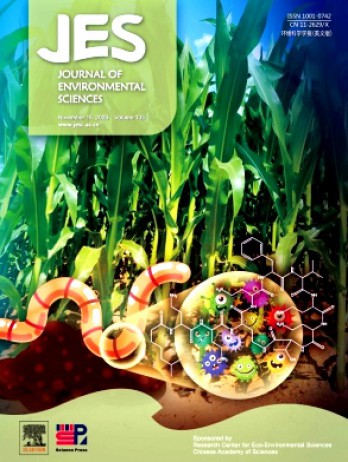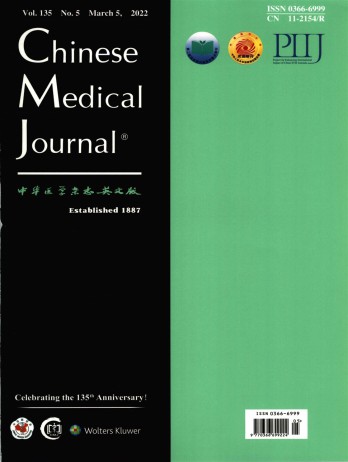想在《Chinese Journal of Chemical Engineering》雜志實(shí)現(xiàn)快速發(fā)表,需要遵循一定的策略和步驟。
以下是一些建議,具體策略如下:
1.?選擇合適的期刊
了解期刊要求:《Chinese Journal of Chemical Engineering》雜志要求投稿內(nèi)容與化學(xué)領(lǐng)域相關(guān),確保論文主題符合雜志的定位,主要欄目有研究論文、傳遞現(xiàn)象與流體力學(xué)、分離科學(xué)與工程、反應(yīng)動(dòng)力學(xué),催化及化學(xué)反應(yīng)工程、系統(tǒng)工程、熱力學(xué)和化工數(shù)據(jù)、生物技術(shù)與生物工程、過(guò)程技術(shù)與產(chǎn)品技術(shù)等。
關(guān)注審稿周期:《Chinese Journal of Chemical Engineering》雜志的審稿周期預(yù)計(jì):預(yù)計(jì)1-3個(gè)月。
2.?提高論文質(zhì)量
內(nèi)容質(zhì)量:確保論文內(nèi)容新穎、觀點(diǎn)明確、數(shù)據(jù)可靠,避免與已有文獻(xiàn)重復(fù)。
嚴(yán)格按照《Chinese Journal of Chemical Engineering》雜志投稿要求準(zhǔn)備稿件:
Title. Concise and informative. Titles are often used in information-retrieval systems. Avoid abbreviations and formulae where possible.
? Author names and affiliations. Please clearly indicate the given name(s) and family name(s) of each author and check that all names are accurately spelled. Present the authors' affiliation addresses (where the actual work was done) below the names. Indicate all affiliations with a lower-case superscript letter immediately after the author's name and in front of the appropriate address. Provide the full postal address of each affiliation, including the country name and, if available, the e-mail address of each author.
? Corresponding author. Clearly indicate who will handle correspondence at all stages of refereeing and publication, also post-publication. Ensure that the e-mail address is given and that contact details are kept up to date by the corresponding author.
? Present/permanent address. If an author has moved since the work described in the article was done, or was visiting at the time, a 'Present address' (or 'Permanent address') may be indicated as a footnote to that author's name. The address at which the author actually did the work must be retained as the main, affiliation address. Superscript Arabic numerals are used for such footnotes.
Abstract
A concise and factual abstract is required. The abstract should state briefly the purpose of the research, the principal results and major conclusions. An abstract is often presented separately from the article, so it must be able to stand alone. For this reason, References should be avoided, but if essential, then cite the author(s) and year(s). Also, non-standard or uncommon abbreviations should be avoided, but if essential they must be defined at their first mention in the abstract itself.
Graphical Abstract
A Graphical abstract is optional and should summarize the contents of the article in a concise, pictorial form designed to capture the attention of a wide readership online. Authors must provide images that clearly represent the work described in the article. Graphical abstracts should be submitted as a separate file in the online submission system. Image size: Please provide an image with a minimum of 531 × 1328 pixels (h × w) or proportionally more. The image should be readable at a size of 5 ×13 cm using a regular screen resolution of 96 dpi. Preferred file types: TIFF, EPS, PDF or MS Office files.
Highlights
Highlights are mandatory for this journal. They consist of a short collection of bullet points that convey the core findings of the article and should be submitted in a separate file in the online submission system. Please use 'Highlights' in the file name and include 3 to 5 bullet points (maximum 85 characters, including spaces, per bullet point).
Keywords
Authors are invited to submit a maximum of 6 keywords associated with their paper, using British or American spelling and avoiding general and plural terms and multiple concepts (avoid, for example, "and", "of"). Be sparing with abbreviations: only abbreviations firmly established in the field may be eligible. These keywords will be used for indexing purposes. At least 3 of these keywords should be chosen from the list of recommended keywords.
Abbreviations
Define abbreviations that are not standard in this field in a footnote to be placed on the first page of the article. Such abbreviations that are unavoidable in the abstract must be defined at their first mention there, as well as in the footnote. Ensure consistency of abbreviations throughout the article.
Acknowledgements
Collate acknowledgements in a separate section at the end of the article before the references and do not, therefore, include them on the title page, as a footnote to the title or otherwise. List here those individuals who provided help during the research (e.g., providing language help, writing assistance or proof reading the article, etc.).
Formatting of funding sources
List funding sources in this standard way to facilitate compliance to funder's requirements:
Funding: This work was supported by the National Institutes of Health [grant numbers xxxx, yyyy]; the Bill & Melinda Gates Foundation, Seattle, WA [grant number zzzz]; and the United States Institutes of Peace [grant number aaaa].
It is not necessary to include detailed descriptions on the program or type of grants and awards. When funding is from a block grant or other resources available to a university, college, or other research institution, submit the name of the institute or organization that provided the funding.
If no funding has been provided for the research, please include the following sentence:
This research did not receive any specific grant from funding agencies in the public, commercial, or not-for-profit sectors.
Nomenclature and units
Follow internationally accepted rules and conventions: use the international system of units (SI). If other quantities are mentioned, give their equivalent in SI. Prohibit the use of the following non-SI units, e.g. M, ppm, bar, atm, ?, cal, et al. Authors wishing to present a table of nomenclature should do so on the second page of their manuscript.
Math formulae
Please submit math equations as editable text and not as images. Present simple formulae in line with normal text where possible and use the solidus (/) instead of a horizontal line for small fractional terms, e.g., X/Y. In principle, variables are to be presented in italics. Powers of e are often more conveniently denoted by exp. Number consecutively any equations that have to be displayed separately from the text (if referred to explicitly in the text).
Footnotes
Footnotes should be used sparingly. Number them consecutively throughout the article. Many word processors can build footnotes into the text, and this feature may be used. Otherwise, please indicate the position of footnotes in the text and list the footnotes themselves separately at the end of the article.
Reference Style
References should be numbered in the order of appearance. The following are examples of different types of references.
(1) S.M. Kresta, Characterization, measurement and prediction of the turbulent flow in stirred tanks, Ph. D. Thesis,McMaster Univ., Canada?1991.
(2) Q.Yu, J.T. Matheickal, P. Yin, P. Kaewsarn, Heavy metal uptake capacities of biomass: A comparison,Proceedings of Chemeca'98, Port Douglas, Australia, 1998.
(3) J.X. Xu, A survey on iterative learning control for nonlinear systems, Int. J. Control, 84 (7) (2001)1275-1294.
(4) T. Brawn, Extraction Chromatography, Elsevier, Amsterdam?1975.
(5) S. Osaki, Multistage vortex pump, Japan Pat., 62186095 (1986).
3.?優(yōu)化投稿流程
網(wǎng)絡(luò)投稿:通過(guò)《Chinese Journal of Chemical Engineering》雜志的官方網(wǎng)站進(jìn)行投稿,確保所有信息填寫(xiě)準(zhǔn)確。
快速通道:部分期刊提供快速通道服務(wù),可以縮短審稿和發(fā)表周期,但通常需要額外付費(fèi)。
4.?積極應(yīng)對(duì)審稿意見(jiàn)
及時(shí)關(guān)注審稿進(jìn)度、與審稿人溝通、耐心等待錄用通知,通過(guò)遵循這些建議,作者可以提高論文的發(fā)表效率并增加被錄用的機(jī)會(huì)。
The Chinese Journal of Chemical Engineering (Bimonthly, started in 1982) is the official journal of the Chemical Industry and Engineering Society of China and published by the Chemical Industry Press. The aim of the journal is to develop the international exchange of scientific and technical information in the field of chemical engineering. It publishes original research papers that cover the major advancements and achievements in chemical engineering in China as well as some articles from overseas contributors. The topics of journal include chemical engineering, chemical technology, biochemical engineering, energy and environmental engineering and other relevant fields. Papers are published on the basis of their relevance to theoretical research, practical application or potential uses in the industry as Research Papers, Research Notes, Chemical Engineering Data and Reviews. Prominent domestic and overseas chemical experts and scholars have been invited to form an International Advisory Board and the Editorial Committee. It enjoys recognition among Chinese academia and industry as a reliable source of information of what is going on in chemical engineering research, both domestic and abroad.
綜上所述,《Chinese Journal of Chemical Engineering》雜志是一本具有較高學(xué)術(shù)水平和影響力的化學(xué)類期刊,它為廣大化學(xué)工作者提供了一個(gè)展示研究成果、交流化學(xué)思想的平臺(tái)。
《Chinese Journal of Chemical Engineering》雜志往年文章平均引文率
聲明:本信息依據(jù)互聯(lián)網(wǎng)公開(kāi)資料整理,若存在錯(cuò)誤,請(qǐng)及時(shí)聯(lián)系我們及時(shí)更正。



